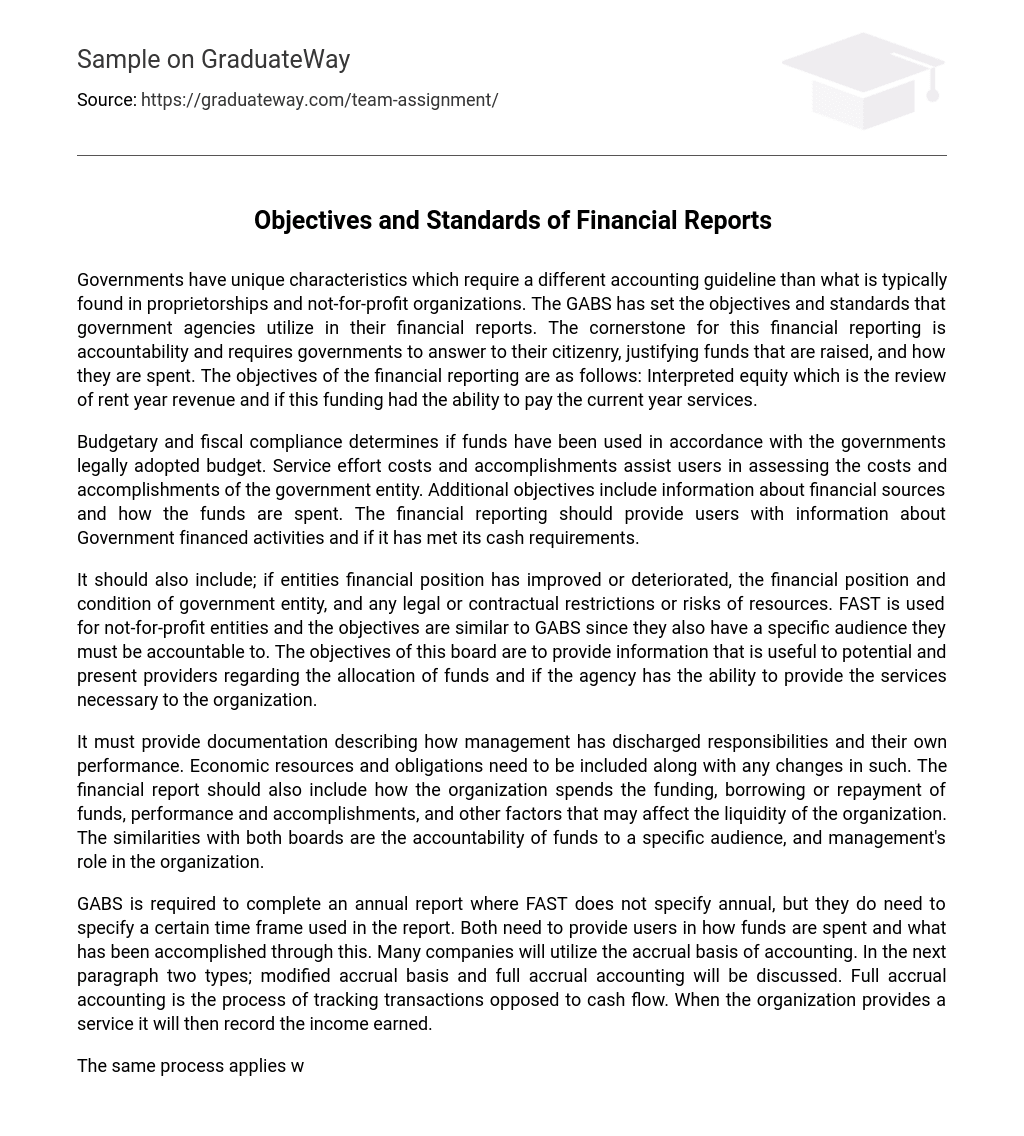Governments have unique characteristics which require a different accounting guideline than what is typically found in proprietorships and not-for-profit organizations. The GABS has set the objectives and standards that government agencies utilize in their financial reports. The cornerstone for this financial reporting is accountability and requires governments to answer to their citizenry, justifying funds that are raised, and how they are spent. The objectives of the financial reporting are as follows: Interpreted equity which is the review of rent year revenue and if this funding had the ability to pay the current year services.
Budgetary and fiscal compliance determines if funds have been used in accordance with the governments legally adopted budget. Service effort costs and accomplishments assist users in assessing the costs and accomplishments of the government entity. Additional objectives include information about financial sources and how the funds are spent. The financial reporting should provide users with information about Government financed activities and if it has met its cash requirements.
It should also include; if entities financial position has improved or deteriorated, the financial position and condition of government entity, and any legal or contractual restrictions or risks of resources. FAST is used for not-for-profit entities and the objectives are similar to GABS since they also have a specific audience they must be accountable to. The objectives of this board are to provide information that is useful to potential and present providers regarding the allocation of funds and if the agency has the ability to provide the services necessary to the organization.
It must provide documentation describing how management has discharged responsibilities and their own performance. Economic resources and obligations need to be included along with any changes in such. The financial report should also include how the organization spends the funding, borrowing or repayment of funds, performance and accomplishments, and other factors that may affect the liquidity of the organization. The similarities with both boards are the accountability of funds to a specific audience, and management’s role in the organization.
GABS is required to complete an annual report where FAST does not specify annual, but they do need to specify a certain time frame used in the report. Both need to provide users in how funds are spent and what has been accomplished through this. Many companies will utilize the accrual basis of accounting. In the next paragraph two types; modified accrual basis and full accrual accounting will be discussed. Full accrual accounting is the process of tracking transactions opposed to cash flow. When the organization provides a service it will then record the income earned.
The same process applies when a purchase is made, and it will record the expense. This method is helpful for an organization that wants to keep track of income and expenses as they occur. With the modified accrual basis, the income earned is recorded just like in full accrual accounting however; when an expense occurs, it will only be recorded when it has been paid. This method allows for more financial flexibility since expenses are not recorded until paid. In conclusion, both the GABS and FAST assist in holding the organization accountable for funds which re collected and spent.





